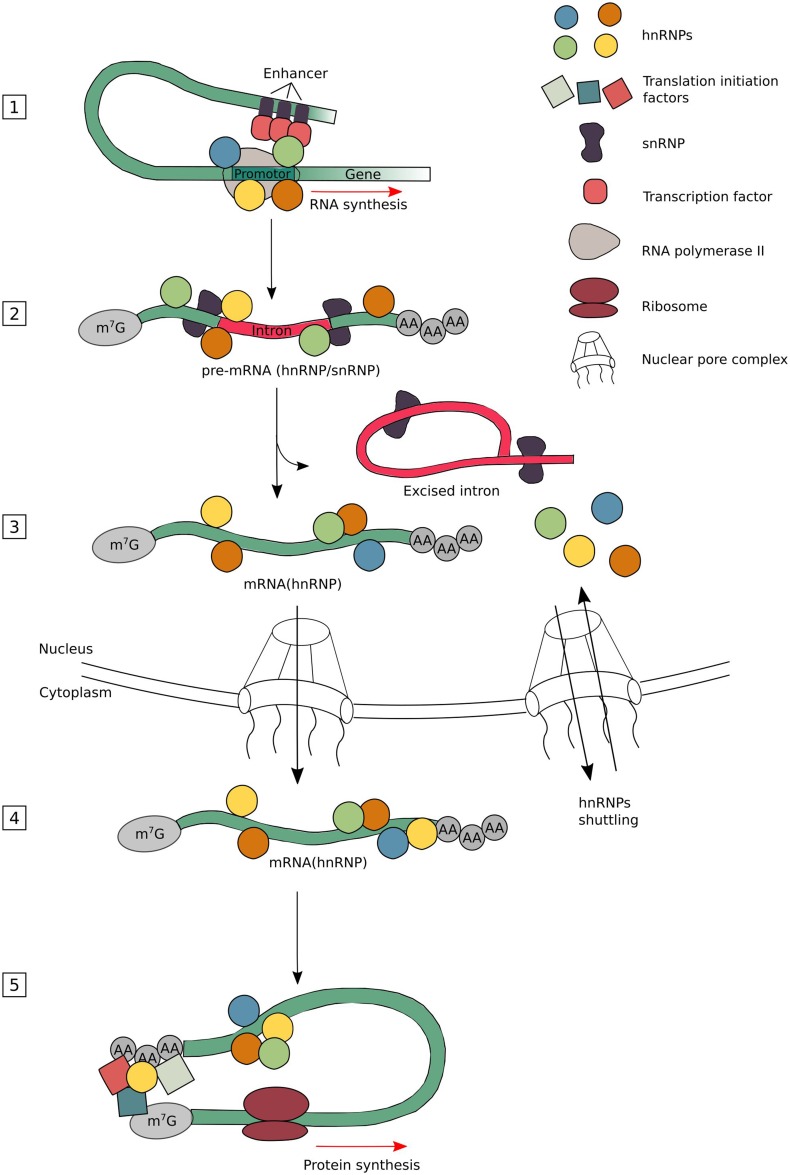Fig. 1.
The diverse nuclear and cytoplasmic functions of hnRNPs. The hnRNPs have been found to be involved in different stages of the mRNA metabolism. They constantly undergo a binding and release from their target mRNAs depending on the modification needed. The hnRNPs bind, together with several transcription factors and other RBPs, to promotor and enhancer sequences to direct transcription (1). As soon as a part of the newly formed transcript is released by the RNA polymerase II, the hnRNPs and snRNPs bind rapidly to their nascent transcript to stabilize it (2). Once the correct RBP complexes are formed, intronic sequences are removed by the spliceosome. Many hnRNPs are known to regulate alternative splicing leading to exon skipping or intron retention (3). Mature mRNAs are stabilized by the binding of several types of RBPs, including hnRNPs, which are found necessary for export through the nuclear pore complex (NPC) and its transport through the cytoplasm until translation initiates (4). As hnRNPs have the capacity to bind to the 3′- and 5′-UTRs of mRNAs, they can control translational repression or enhancement. Depending on the composition of complexes at the sites where translation initiation factors assemble, the choice to start translation or not will be made (5). Please note that not all different hnRNP subgroup members are involved in every nuclear or cytoplasmic function. The different hnRNPs are color coded, but do not represent specific hnRNP members

